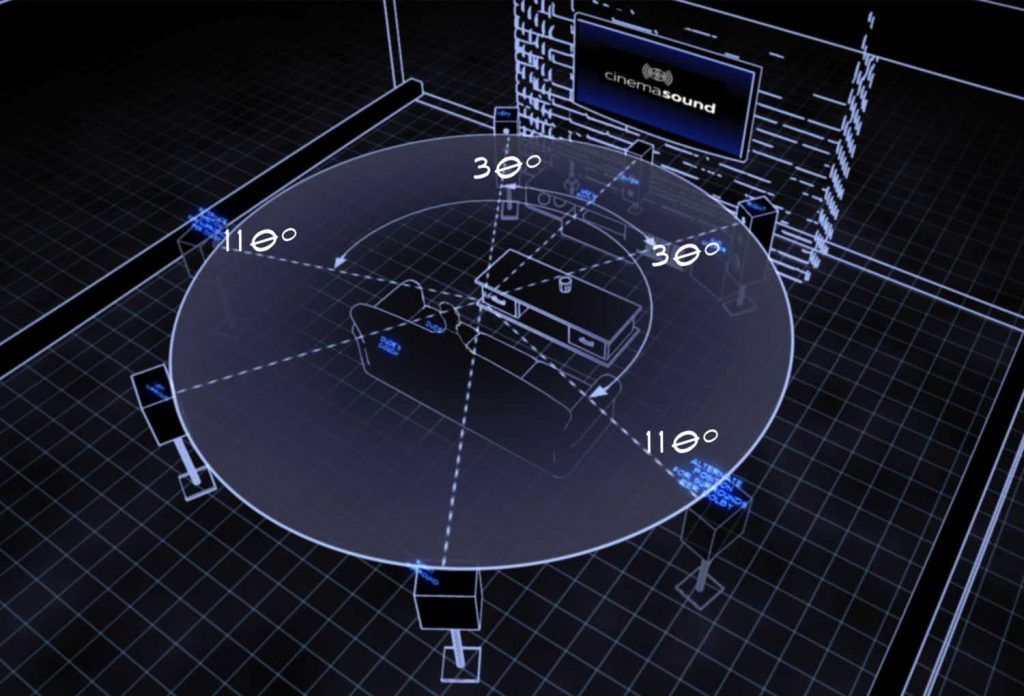Top 10 Useful Tips – Surround Sound Mixing
Firstly, what is surround sound mixing?
Surround sound mixing is a technique used in audio production to create an immersive audio experience by distributing sound across multiple channels or speakers surrounding the listener. Unlike traditional stereo audio, where sound comes from two speakers (left and right), surround sound involves using additional speakers placed in various positions around the listener to create a three-dimensional audio environment.
The most common surround sound setups are 5.1 (five main channels plus a subwoofer) and 7.1 (seven main channels plus a subwoofer). In these setups, speakers are placed in front, behind, and to the sides of the listener, creating a more realistic and enveloping audio experience.

Surround Sound Mixing – Key Elements:
- Panning: The process of placing audio elements within the sound field. By adjusting the levels of each channel, sound engineers can make it seem like sounds are coming from specific directions or moving through the space.
- Depth and Distance: Mixing in surround sound allows for a sense of depth and distance between sounds. By adjusting the volume levels and applying effects like reverb and delay, sound engineers can create the illusion of sounds being closer or farther away from the listener.
- Movement and Dynamics: Surround sound mixing enables audio engineers to create dynamic and immersive audio experiences. Sounds can move smoothly from one speaker to another, enhancing the feeling of motion and directionality.
- Environmental Effects: Surround sound mixing is particularly effective for creating environmental effects, such as rain falling from the rear speakers, vehicles passing by, or birds chirping from different directions. This adds realism and richness to audio projects.
- Bass Management: The use of a dedicated subwoofer channel ensures that low-frequency effects and rumble are well-distributed without overwhelming the other channels.
- Dialog and Center Channel: In film and video projects, the center channel is often used for dialogue to ensure clear and focused speech, while other elements like music and effects are distributed across the other channels.
Surround sound mixing is commonly used in various media forms, including movies, television shows, video games, music production, and virtual reality experiences. It enhances the listener’s sense of immersion and engagement by replicating the way sound behaves in the real world, making the audio experience more lifelike and captivating.
Our Top 10 Tips For Mixing in Surround Sound
Creating an immersive and effective surround sound mix requires attention to detail and a deep understanding of audio spatialization. Here are 10 tips to help you achieve a top-notch surround sound mix:
- Room Calibration and Acoustics: Start by calibrating your room and ensuring good acoustics. This includes treating your room to minimize reflections and standing waves that can affect your perception of spatial cues.
- Monitor Setup: Use a quality 5.1, 7.1, or higher-channel speaker setup. Make sure your monitors are positioned correctly to accurately represent the surround sound field.
- Panning Techniques: Utilize panning to accurately place sounds within the surround field. Avoid extreme panning, as it can create imbalances and discomfort for listeners. Gradual movements are more natural.
- Depth and Distance: Use volume and processing (reverb, delay) to create a sense of depth and distance between sounds. Sounds closer to the listener should be more upfront, while distant sounds should have a sense of space.
- Frequency Management: Pay attention to the frequency content of your sounds. Low-frequency sounds (subwoofers) can be used to create rumble, but ensure they don’t overwhelm the mix. High-frequency sounds can provide directionality cues.
- Dialogue Clarity: In film and video projects, dialogue clarity is crucial. Make sure the dialogue is centered and clear, even in surround mixes. Use the center channel to anchor dialogue.
- Surround Effects: Utilize surround channels to enhance the sense of immersion. Ambiences, environmental sounds, and subtle effects can be placed in the rear channels to create a more encompassing experience.
- Automation: Implement automation to add movement and dynamic shifts to your surround mix. This can simulate sounds moving through the environment and enhance realism.
- Bass Management: Use a dedicated subwoofer channel to handle low-frequency content. Ensure that the crossover frequencies between the main speakers and the subwoofer are set correctly for a seamless bass experience.
- Testing on Different Systems: After your mix is complete, test it on various playback systems. What sounds great in your studio might not translate well to other environments. Consider listening on headphones, consumer-grade 5.1 or 7.1 setups, and high-end home theater systems.
Want To Make Good Afrobeat Music?
We offer top notch online Afrobeat music making services here at Freaksonar. Find our services below :